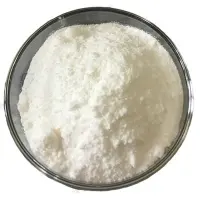-
Categories
-
Pharmaceutical Intermediates
-
Active Pharmaceutical Ingredients
-
Food Additives
- Industrial Coatings
- Agrochemicals
- Dyes and Pigments
- Surfactant
- Flavors and Fragrances
- Chemical Reagents
- Catalyst and Auxiliary
- Natural Products
- Inorganic Chemistry
-
Organic Chemistry
-
Biochemical Engineering
- Analytical Chemistry
-
Cosmetic Ingredient
- Water Treatment Chemical
-
Pharmaceutical Intermediates
Promotion
ECHEMI Mall
Wholesale
Weekly Price
Exhibition
News
-
Trade Service
In the clinical, we often encounter patients who complain of physical weakness or total weakness, so what reasons should be considered? Related issues will be discussed in this articleBefore you get on dry goods, look at a case firstmedical history review
patients are 28-year-old male, due to "total weakness 2 days" to see a doctor, 2 days ago appeared full body weakness, to double lower limb sopheave obvious, and have difficulty walkingThe night before the onsthea, the patient had been drinking alcoholPatients also experienced similar symptoms intermittently during the year, but the symptoms were not obvious and the patient did not visit the local hospitalThere has no history of special diseases, patients have no family history, but have a history of thyroid diseaseThe patient had palpitations, sweating, anxiety, increased bowel removal, wasting, and insomnia a few months agophysical examinationpatients tachycardia, heart rate 120 times / minute, two-sided lower limb near end weakness, muscle strength 3 levels, knee and ankle reflection weakened, the rest of the physical examination is normalelectrocardiogram checkelectrocardiogram prompts sinus heart rhythm, accompanied by high ventricular voltage, the front of the ST segment is depressed, and there is Q wave formation, QT inter-period in the normal upper limit (Figure 1)An electrolyte abnormality was initially suspected, but blood tests later confirmed low blood potassium levels of 1.9mEq/L (1.9mmol/L)The patient's phosphoric acid kinase increased to 487U/L, the anion gap was normal, and the other indicators were normalThe electrocardiogram showed that sinus tachycardia was accompanied by high voltage, ST segment slower, U wave formation, suggesting hypokalemia patients young men, systemic muscle weakness, tendon reflexes, hypokalemia, electrocardiogram abnormalities, suspected of thyroid toxicity low potassium periodic paralysis (THPP) Thus, a thyroid function check was further carried out, indicating primary hyperthyroidism (free T4 5.14 ng/dL, TSH 0.009mU/ml) 1
What should I consider when there is weakness in the lower limbs? for this patient, there is double lower limb muscle weakness, in the diagnosis of need to consider the following reasons: Guillain-Barre syndrome? In this case, the patient did not have elevated muscle weakness, and did not have infection history, so it was not considered severe muscle weakness? Patients do not engage in sexual fatigue, there is no "morning light twilight weight", so do not consider spinal cord pressure caused by trauma? Patients have no history of trauma and can also be ruled out patients have no history of mental illness and do not consider post-conversion syndrome ischemic myelitis? Because there is no cardiovascular risk factors blood vessels, nor considered the above-mentioned diagnosis does not explain tachycardia In addition, what are the causes of hypokalemia in patients? family-like hypokalesurescanperiodic paralysis can be ruled out because the patient has no obvious family history In addition, the patient did not lose excessive potassium ions in the urine test, and the patient did not vomit or diarrhea, which does not explain hypokalemia aldosterone hyperactivity cannot be ruled out because it requires more hormone testing to confirm it Although aldosterone can cause hypokalemia, it can cause high blood pressure, but the patient does not have high blood pressure Therefore, it is not possible to consider that aldosterone hyperactivity causes hypokalemia finally takes into account low potassium periodic paralysis, which can explain muscle weakness, tachycardia, and hypokalemia 2
What is THPP? hypothyroidism low potassium periodic paralysis is a rare disease, more common in Asia than in Western countries Although thyroid lesions are more likely to occur in women, THPP is more common in men, especially in people aged 20-40 it is generally manifested as repetitive, intermittent appearance of lower limb weakness, occasional muscle pain, muscle spasms Under normal circumstances, a nervous system examination can detect a decrease in tendon reflexes The patient's symptoms are generally relieved at 72h Induced factors include physical activity, infection, surgery, carbohydrate or alcohol intake muscle weakness in young patients is generally caused by mild, self-limiting causes However, we need to keep in mind some other serious causes of muscle weakness THPP is a rare disease in Europe and the United States that can cause fatal cardiovascular and respiratory complications It is characterized by repeated systemic muscle weakness, especially leg muscle weakness, accompanied by hypokalemia and hyperthyroidism Its diagnosis is based on clinical history, laboratory examinations and electrocardiograms, and its early treatment is mainly to correct blood potassium and use non-selective beta-blockers in addition, the thyroid gland function must be normal during treatment to avoid the recurrence of symptoms The cases in this paper are difficult to diagnose THPP correctly due to vague symptoms and non-specificity in clinical work, systemic weakness in patients may be the first clinical manifestation of potential hyperthyroidism Cases of severe systemic weakness, tachycardia, reduced reflexes of lower limb tendons and even death require a high degree of vigilance from neurologists How does thPP treat 3 ? patients in this paper begin to give patients slow intravenous potassium supplementation under the conditions of continuous electrocardiogram monitoring, and to give oral beta-blockers (propranolol 20mg po.q6h) After a few hours, the patient's blood potassium was detected normally, and an electrocardiogram was reviewed normally (see Figure 2), the patient's double lower limbs were weakly remissioned patients' condition is stable, perfect thyroid ultrasound indicates thyroid blood vessel spout, iodine 131 intake rate indicates increased intake, anti-TSH receptor antibody positive confirmed the diagnosis of Grave's disease Anelectrocardiogram indicates that after correcting the blood potassium level, the ST segment is normal, the U wave disappears, and the voltage decreases the patient is discharged from the hospital 48 hours after admission to the hospital, and when discharged, he ordina in 10 mg po.q8 h and propranolol 40 mg po.q8 h, and let the patient follow up at the endocrine clinic to determine whether the patient needs radiation therapy reviewed cortisol, aldosterone, catecholamine, adrenal corticosteroids and adrenal levels during the outpatient follow-up, and the results suggested that it was normal 4
Discussion THPP hypokalemia is not caused by potassium deficiency, but by hyperthyroidism causes an increase in beta-epinephrine, resulting in increased activity of the Na-K-ATP pump, resulting in the transfer of potassium ions from the ex-cell to the cell for this reason, no increase in potassium ions has been detected in urine or feces The degree of hypokalemia is associated with the severity of weakness in the lower limbs When blood potassium levels are below 3mmol/L is not uncommon, there have been reports of potassium in the blood as low as 1.1 mmol/L differential diagnosis of double lower limb weakness includeguid guillabola syndrome, transverse myelitis, spinal compression, post-conversion disorder, familial and dispersive hypokalemia Because of the low incidence of the disease and the absence of previous symptoms of hyperthyroidism, THPP is difficult to diagnose when the disease is highly suspected, a diagnosis can be established by asking about medical history, examination scans, and changes in electrocardiograms before perfecting the laboratory test The changes in the electrocardiogram generally include tachycardia (due to hyperthyroidism), an extension of the pr inter-period, and the presence of high voltage and U wave accompanied by an extension of the period of QT these early tests are necessary to avoid possible early and fatal complications, such as hypokalemia caused by ventricular arrhythmia , transverse muscle dissolution or respiratory muscle paralysis It is important to stress that THPP can be fatal, but early detection can be reversed confirmthPP by hypokalemia, elevated T3 and T4 levels, TSH levels and often elevated levels of creatinate phosphonatekinase (CKP) Most patients with hyperthyroidism with periodic hypokalemal paralysis are associated with Grave's disease Although periodic hypokalemia is rare in Grave's disease, the presence of low potassium periodic paralysis in Grave's disease is well known THPP is also associated with thyroiditis, thyroid nodules, and TSH pituitary adenomas In two-thirds of cases, there can be hypophosphetic and hypoxemia, and no acid-base balance disorder Electromyography studies show that the signs of myopathy are a decrease in the amplitude of muscle action potential, while the amplitude of muscle action potential is not changed after epinephrine is used treatment is mainly given oral or intravenous slow supplementation of potassium chloride, preventing fatal cardiovascular complications Non-selective beta blockers such as propranolol can increase blood potassium levels by inhibiting the activity of atP enzyme pumps, without the presence of reboundy hyperkalemia, and can prevent recurrence should avoid the use of glucose during treatment, as glucose stimulates insulin secretion and aggravates hypokalemia Once potassium levels return to normal, oral potassium supplementation is unnecessary, as oral rehydration does not prevent further onset of muscle weakness By treating hyperthyroidism, restoring thyroid function can effectively prevent the recurrence of the disease







